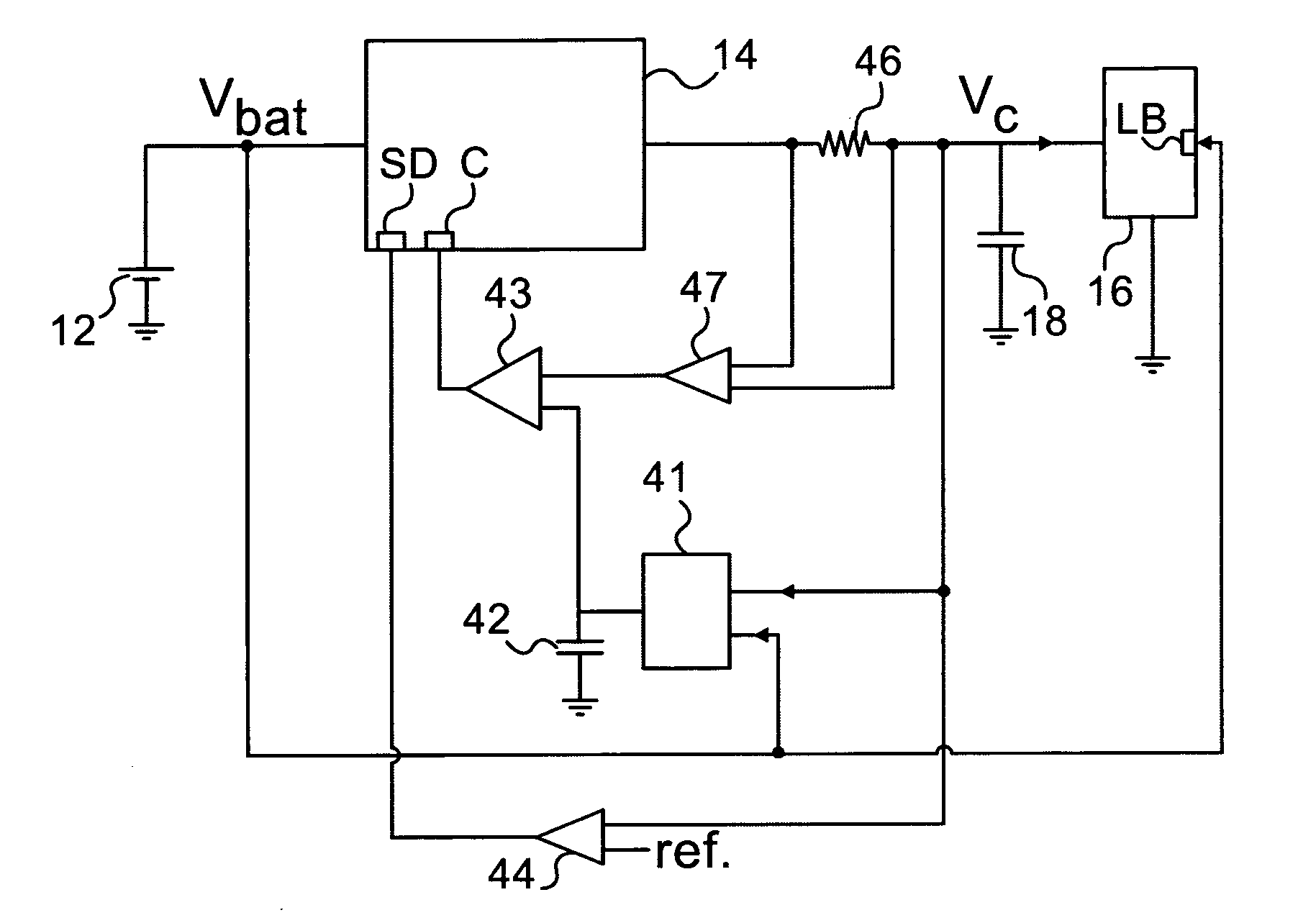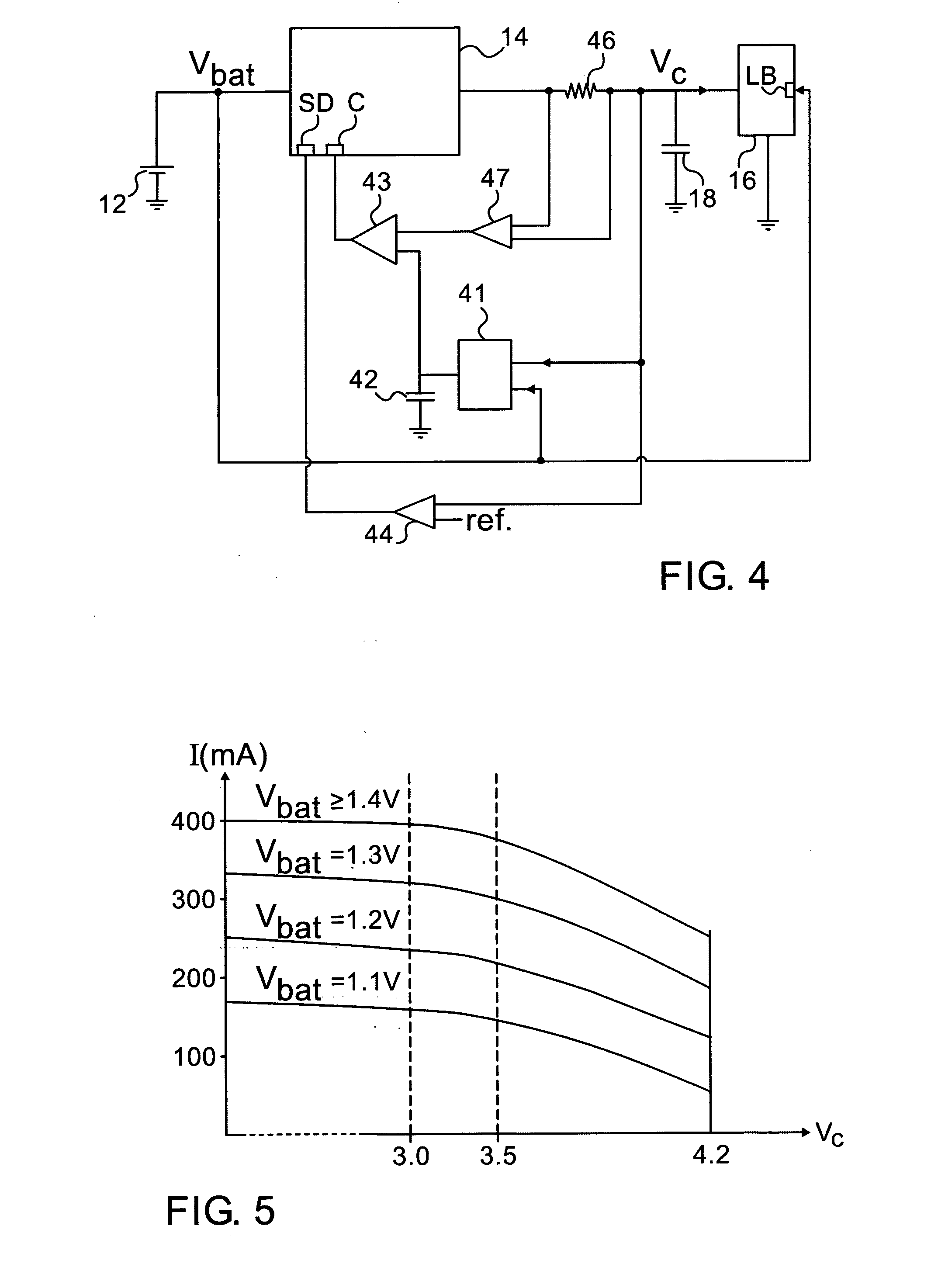Capacitor powered mobile electronic device
a mobile electronic device and capacitor technology, applied in the direction of substation equipment, electrical equipment, power management, etc., can solve the problems of reducing requiring substantial pulses of current for short periods, and most primary cells, so as to reduce the overall current drawn from the battery, and efficiently provide the current
- Summary
- Abstract
- Description
- Claims
- Application Information
AI Technical Summary
Benefits of technology
Problems solved by technology
Method used
Image
Examples
example
[0050]An example of the phone performance obtainable with a capacitor based power supply, constructed according to the present disclosure, is shown in Table I below. The results were obtained on a converted Nokia 1200 phone, using a single AA battery either of an alkaline type (Energizer EN91), or of a rechargeable NiMH type (Energizer NH15), and an NH1-GEN1A-A power conversion chip, obtainable from Techtium Ltd., of Tel Aviv, Israel. The full load was simulated as a transmission using 2.2 A current pulses of duration 0.6 msec. every 4 msec.
TABLE IAA Battery TypeTest ConditionsTimeAlkalineFull load at outputMax. Talk Time - 53 minAlkalineAverage load at outputAvg. Talk Time - 4 hoursAlkalineStandby275 hoursNiMHFull load at outputMax. Talk time - 109 minNiMHAverage load at outputAvg. Talk Time - 5.5 hoursNiMHStandby275 hours
PUM
 Login to View More
Login to View More Abstract
Description
Claims
Application Information
 Login to View More
Login to View More - R&D
- Intellectual Property
- Life Sciences
- Materials
- Tech Scout
- Unparalleled Data Quality
- Higher Quality Content
- 60% Fewer Hallucinations
Browse by: Latest US Patents, China's latest patents, Technical Efficacy Thesaurus, Application Domain, Technology Topic, Popular Technical Reports.
© 2025 PatSnap. All rights reserved.Legal|Privacy policy|Modern Slavery Act Transparency Statement|Sitemap|About US| Contact US: help@patsnap.com



